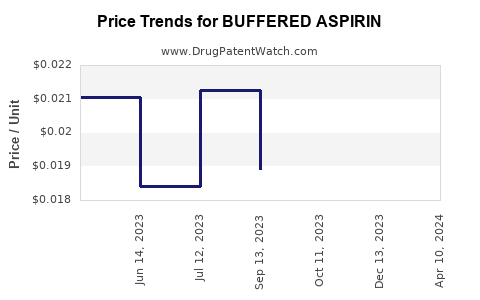Drug Price Trends for BUFFERED ASPIRIN
✉ Email this page to a colleague

Average Pharmacy Cost for BUFFERED ASPIRIN
| Drug Name | NDC | Price/Unit ($) | Unit | Date |
|---|---|---|---|---|
| BUFFERED ASPIRIN 325 MG TB | 70000-0147-01 | 0.01892 | EACH | 2024-11-20 |
| BUFFERED ASPIRIN 325 MG TB | 70000-0147-01 | 0.01887 | EACH | 2024-10-23 |
| BUFFERED ASPIRIN 325 MG TB | 70000-0147-01 | 0.02008 | EACH | 2024-09-18 |
| BUFFERED ASPIRIN 325 MG TB | 70000-0147-01 | 0.02074 | EACH | 2024-08-21 |
| BUFFERED ASPIRIN 325 MG TB | 70000-0147-01 | 0.02201 | EACH | 2024-07-17 |
| BUFFERED ASPIRIN 325 MG TB | 70000-0147-01 | 0.02065 | EACH | 2024-06-19 |
| >Drug Name | >NDC | >Price/Unit ($) | >Unit | >Date |


